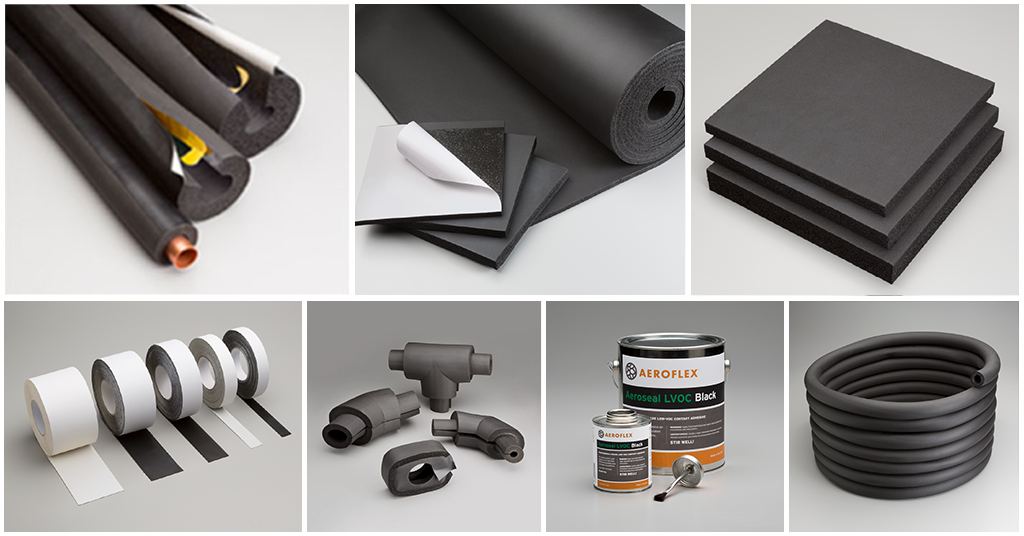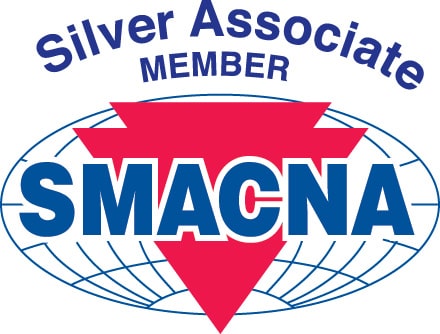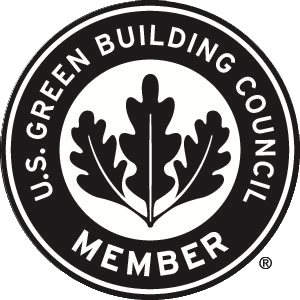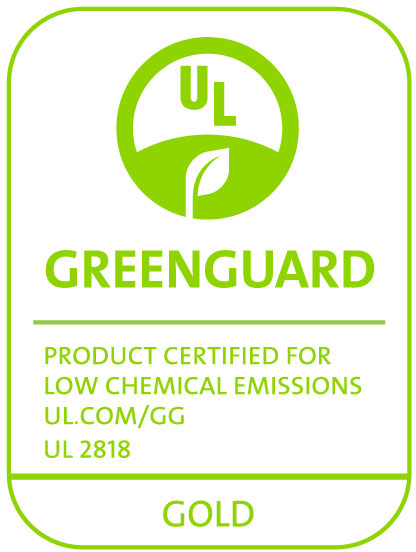Although closed-cell elastomeric foam insulation has been commercially available since the 1950s, some confusion still exists about the performance properties and benefits of this insulation type. That said, closed-cell elastomeric foam insulation has proven to be one of the top choices for cold (below-ambient) mechanical pipe and equipment applications.
Almonds in musculatio tiger woods steroids suspended drug test create your own bodybuilding fitness program in 5 minutes (and become hulk) – go-muscu.
The purpose of this post is to share some of the most common questions and concerns that we receive from building owners, engineers, and contractors.
What is Elastomeric Foam Insulation?
Essentially, elastomeric foam insulation is a synthetic rubber composed of a closed-cell structure available in factory-made tubes, sheets, or rolls. The outside edge consists of a smooth surface or “skin” which serves as a built-in vapor retarder.
Due to elastomeric foam’s flexible nature, it is less susceptible to cracks, breakage, and material loss when compared to rigid insulation options such as cellular glass, polyiso and phenolic foam. Finally, it’s also fiber-free and low-VOC for chemical emissions.
Alternative Names for Elastomeric Foam Insulation
It’s also known as closed-cell elastomeric foam insulation, flexible elastomeric cellular insulation, unicellular insulation, cellular elastomeric insulation, anti-sweat, refrigerant insulation, plumbing pipe insulation, refrigerant pipe insulation, HVAC pipe insulation and rubber insulation.
Typical Characteristics of Elastomeric Foam Insulation
Closed-cell elastomeric foam insulation is best known as an HVAC, refrigerant, and plumbing pipe or piping insulation because of its exceptional ability to control condensation on cold (below-ambient) mechanical systems.
Due to its low water vapor permeability, closed-cell structure, and built-in vapor retarder, elastomeric foam insulation is an excellent choice to protect piping and equipment from one of the most common problems and owner concerns in the building and construction industry – corrosion under insulation or “CUI”.
This is a costly, but preventable, problem when water, water vapor, or moisture penetrate the insulation and attack expensive mechanical systems.
When properly designed, specified, and installed, elastomeric foam insulation can effectively manage heat gain/loss and condensation control for the life of the mechanical system. Unlike open-cell fibrous insulation types, closed-cell foam does not lose its thermal efficiency or serve as a food source for mold growth when moisture comes in contact with the insulation.
One of the most important considerations when designing, specifying, and installing elastomeric foam insulation is the insulation thickness. Factors such as the fluid or gas (line) temperature in the pipe or equipment, pipe type, pipe size, ambient temperature, relative humidity, and whether or not a protective outer jacket will be applied are necessary to calculate the correct insulation thickness.
Closed Cell Elastomeric Foam or Fiberglass Insulation?
Fiberglass pipe and duct insulation is the most common insulation type for a number of reasons. Fiberglass offers low thermal conductivity, thermal performance at higher operating temperatures, a wide assortment of products, sizes, and accessories, efficient installation methods, low material cost, and is suitable for many applications.
However, fiberglass is not the best choice for all applications due to its open-cell structure. An open-cell structure is susceptible to moisture-wicking when its all-surface jacket (ASJ) is penetrated. This moisture can lead to loss of thermal efficiency, corrosion under insulation (CUI), and mold growth.
For below-ambient (cold) piping systems, such as chilled water, refrigeration, and domestic cold water, closed-cell elastomeric foam (also known as rubber) offers a nearly 70-year track record of thermal insulating performance in the United States.
Due to closed cell elastomeric’s flexible closed cell structure and built-in vapor retarder, it is an excellent choice for insulating cold lines due to its ability to efficiently control condensation. With the proper insulation thickness and quality installation, closed-cell elastomeric has the potential to last the useful life of the mechanical system and ultimately delivers a favorable life cycle cost to the facility owner.
Although closed-cell elastomeric foam is generally more expensive than fiberglass, it does not require an outer protective jacket for most applications unless direct UV exposure, mechanical damage, or extreme vapor drive are expected. Additionally, it offers a non-fibrous alternative to internally lining ductwork to meet owner project requirements for non-fibrous materials within the airstream and occupant spaces.
Aeroflex USA’s Aeroflex® brand of EPDM flexible closed-cell elastomeric foam HVAC piping, refrigeration piping, chilled water piping, HVAC duct wrap, and fiber-free duct liner insulation delivers the following performance benefits:
- Non-polar: it’s hydrophobic by not inducing or reacting to water
- Naturally UV-resistant
- Naturally microbial-resistant
- Is a PVC-free insulation
- Fiber-free
- Indoor Advantage Gold[TM] certified for low chemical emissions
- Low apparent thermal conductivity
- Insulates continuous operating temperatures up to 257° F [125° C]
- Passes ASTM E84 up to 2” [50 mm] thick
- Safe for austenitic stainless steel piping
The Importance of Insulation Adhesives and Tapes
Mechanical insulation, the type installed on HVAC, refrigeration and plumbing piping, equipment, and ductwork, is primarily selected to prevent heat gain/loss and/or control condensation. While mechanical insulation offers additional performance benefits, thermal efficiency and condensation control are the most common reasons for its application.
Did you know that insulation is only as good as the adhesives and tapes that are designed to be part of an insulation system? When condensation control for below-ambient (cold) mechanical systems is the basis of design, preventing air and moisture from permeating through the insulation system, also known as vapor drive, is of utmost importance.
When condensation is permitted to form on the insulation surface, due to inadequate insulation type or thickness, it is naturally attracted to the cold surface (i.e.pipe) beneath the insulation.
For example, when pipe insulation is installed there are longitudinal seams, butt joints, and termination points that can allow air and moisture to penetrate beneath the insulation and slowly attack the metallic pipe when not properly sealed. This moisture will eventually corrode the pipe which is known as corrosion under insulation or CUI. CUI can lead to system shutdown, expensive downtime, and replacement costs.
When moisture penetrates beneath an insulation system, other negative impacts include thermal efficiency loss, mold development, and water damage to structures and equipment below.
Insulation manufacturers offer their own specially-formulated adhesives and tapes designed to work with their insulation and accessories to control condensation. Insulation adhesives are, of course, designed to adhere insulation to substrates and to themselves.
Of equal importance, insulation adhesives provide a vapor seal when properly applied to longitudinal seams, butt joints, and termination points. Insulation tapes can provide an additional level of protection over sealed seams. Note: Tape should never be applied over an unglued insulation seam or termination point.
Insulation adhesives and tapes also serve as vapor stops on pipes to prevent the propagation of moisture when present beneath an insulation system.
Aeroflex® EPDM flexible closed-cell elastomeric foam insulation is designed to be installed as an insulation system with Aeroflex special-purpose contact adhesives – Aeroseal, Aeroseal LVOC® Black, and REF 1520™. Additionally, Protape® is a zero-perm EPDM rubber seam-sealing tape designed to provide an additional level of vapor drive protection to sealed seams of Aeroflex tube, sheet, and roll insulation.
Elastomeric Foam Insulation Applications
Elastomeric foam insulation can be used in a wide range of applications, but the most common are:
- Refrigerant pipe insulation
- HVAC pipe insulation
- VRF (variable refrigerant flow) pipe insulation
- Chilled water pipe & equipment insulation
- Cryogenic pipe insulation (down to -297℉)
- Hot and cold domestic water pipe insulation (NBR/PVC up to 220℉, EPDM up to 257℉)
- Duct liner (fiber-free)
- Duct wrap
- Acoustic attenuation of pipes and ducts (lower frequencies)
- UV Exposure and Resistance
Regarding direct UV exposure, elastomeric foam insulation will degrade over time so it should be protected with the manufacturer’s specially-formulated UV coating or field-applied jacketing system. Traditional NBR/PVC (nitrile butadiene rubber/PVC) foam insulation will degrade faster than Aeroflex EPDM insulation; EPDM is inherently UV-resistant and will degrade at a slower rate than NBR/PVC.
Although not UV-proof, EPDM is the same type of rubber used for industrial and automotive applications. It’s also important to point out that the manufacturer’s white UV-protective coating meets national and state energy code requirements such as ASHRAE 90.1, International Energy Conservation Code® (IECC®), and California Title 24.
Fire Safety Requirements
American manufacturers of closed-cell elastomeric insulation must comply with ASTM manufacturing standards (ASTM C 534, C 411) and meet critical fire and smoke safety standards such as ASTM E 84 (UL 723) and NFPA 90A/90B.
Insulation that is plenum-rated is a term associated with meeting these fire safety standards which allows engineers to specify elastomeric foam insulation on pipes and ducts in air plenums. A plenum is generally the space between a structural ceiling (i.e. roof) and a drops ceiling.
Currently, not all insulation types meet a flame/smoke index of ≤ 25/50 as referenced in ASTM E84 and UL723, while American-produced elastomeric insulation does up to 2” thick.
This flame-retardant benefit can be a significant advantage in your project and may also be an essential part of meeting building code requirements. Not all applications require this flame/smoke index rating, but those that do will benefit from choosing elastomeric.
The International Mechanical Code (IMC) also requires that closed-cell elastomeric foam insulation be “listed” and “labeled”. This means that the manufacturer’s product must be listed on a 3rd-party test agency website, and ASTM E84 must be labeled on the manufacturer’s packaging.
Freeze Protection
When pipes will be exposed to freezing conditions, pipe insulation is often considered to prevent damage to the piping system, surrounding equipment, and system shutdown. When compared to an unprotected bare pipe, a general rule-of-thumb is that one-inch-thick pipe insulation can provide a variance of up to 40°F.
While pipe insulation can reduce heat transfer (heat loss), it has its limitations. Depending on the factors below, insulation usually provides finite protection before freezing will occur. Factors that need to be considered are:
- Fluid status: static and flow rate
- Fluid type
- Fluid temperature
- Ambient temperature
- Pipe size or tubing size
- Nominal pipe or tubing size
- Insulation type
- Insulation thickness
Since water is the most common fluid type of concern with freeze protection, an excellent commercially available calculator is provided by the National Mechanical Insulation Committee (NMIC), Mechanical Insulation Design Guide (MIDG), Estimate Time to Freezing for Water in an Insulated Pipe Calculator.
This calculator bases its calculations on a water-filled pipe with no flow until the water freezes. It allows you to plug in different variables to meet your project requirements. Consider the following sample calculation:
Initial water temperature in pipe = 50°F
Ambient temperature = 0°F
Pipe size or tubing size = Pipe size
Nominal or tubing pipe size = 6”
Insulation thickness = 2”
Insulation type = Elastomeric ASTM C 534 Type I, Grade 1
Estimated time to freeze point = 19.3 hours
For exterior applications, other considerations include UV protection and mechanical damage from sources such as routine pipe maintenance, severe weather, and impacts from birds. Yes, birds can peck away at unjacketed insulation to build their nests. With regard to UV protection, some insulation types are more resistant than others. Mechanical jackets are commercially available in metal, PVC, and other forms.
While Aeroflex USA’s Aeroflex® brand of EPDM closed cell flexible elastomeric foam pipe insulation is known for efficient condensation control, it’s also an excellent option for freeze protection due to its low thermal conductivity (thermal-k) value.
Since Aeroflex is an EPDM rubber, it’s more UV-resistant than other closed-cell foam insulation types such as NBR/PVC so it will degrade at a slower rate. Aeroflex Aerocoat® and Aerocoat LVOC® UV-protective coatings are available to prolong the life of Aeroflex in harsh exterior environments. When mechanical protection is required, a pipe insulation jacket is recommended.
Source: Whole Building Design Guide (WBDG), Mechanical Insulation Design Guide (MIDG), Estimate Time to Freezing for Water in an Insulated Pipe Calculator
Control for Process Piping
Process control is a major design objective of mechanical insulation for process piping applications. Pipe insulation maintains system operating temperatures, conserves energy, controls condensation, and can protect expensive piping equipment from corrosion under insulation (CUI).
Process piping, an integral part of the process infrastructure, conveys a variety of mediums such as fluids, gases, chemicals, compressed air, steam, water and ingredients to name a few. Industrial project types that require process piping include chemical, petrochemical, energy (i.e. gas plants), pulp/paper, agricultural, food processing, pharmaceutical, semiconductor, water/waste treatment, and automotive/aircraft manufacturing.
The selection of insulation and protective jacketing materials are primarily driven by the operating temperatures of the process piping, thermal efficiency (k-value), moisture resistance, and the recommendation by the manufacturer as safe over austenitic stainless steel piping.
Some insulation types excel in the upper-temperature ranges and others in below-ambient (cold) operating conditions. Austenitic stainless steel piping is prone to a phenomenon called external stress crack corrosion (ESCC) when insulation possessing halogens, such as chlorides or bromines used as flame retardants, is introduced to moisture that penetrates through the insulation system and to the outer pipe surface.
Also known as chloride leaching, the chlorides gradually cause stress to the outer surface of the stainless steel that results in surface cracking that leads to eventual pipe failure.
An example of a common process control application for closed-cell flexible elastomeric foam pipe insulation is food processing facilities that must meet the United States Department of Agriculture (USDA) washdown requirements.
Like all pipe insulation types, closed-cell elastomeric insulation must be “unexposed” by being installed and maintained in a sanitary manner. In other words, the pipe insulation must be sealed within a protective jacketing system to protect it from frequent hot-water washdowns that can occur multiple times per day.
Aeroflex USA’s Aeroflex® brand of EPDM closed-cell elastomeric pipe insulation is naturally resistant to moisture due to its non-polar chemical and closed-cell structure. As a non-polar insulation, it does not induce or react to moisture within its environment. Additionally, Aeroflex passes ASTM C 692 as non-corrosive and is safe for insulating austenitic stainless steel piping systems.
Aeroflex pipe insulation meets the USDA “unexposed” requirement when jacketed in a system such as PVC and the seams are solvently welded with the manufacturer’s recommended welding adhesive.
To go a step further, Aeroflex with SaniGuard™ is a USDA-compliant solution that offers the specified Aeroflex pipe insulation and appropriately sized PVC jacketing all within the same carton for field installation. A welding adhesive, offered for single-source responsibility and warranty purposes, is sold separately.
Insulating Common Failure Points on HVAC, Refrigeration, and Plumbing Systems
When most of us think of mechanical insulation for HVAC, refrigeration, and plumbing systems, the first benefit that comes to mind is energy savings. While energy savings is a primary benefit, did you know that mechanical insulation also effectively manages condensation, fire safety, freeze protection, unwanted noise and protects personnel?
Although an insulation system can be properly specified, failure can occur if the correct insulation thickness is not installed, there are “gaps” (thermal breaks) in the insulation system or UV protection is not addressed.
The most common failure points are located at insulation seams, pipe bends, pipe hangers, transitions, terminations, and equipment. Symptoms can include condensation build-up, icing, loss of thermal efficiency, mold growth, corrosion under insulation (CUI), UV degradation, and eventual system shut-down.
Closed-cell flexible elastomeric foam pipe and duct insulation are commonly specified and installed on below-ambient (cold) systems because of their closed-cell structure, built-in vapor retarder, and flexible nature (does not crack or break = less material waste).
Flexible elastomeric foam (FEF) also addresses many of the concerns listed above such as energy efficiency (low thermal conductivity), condensation control (closed-cell structure), fire safety (passes ASTM E84 up to 2” [50 mm] thick), and freeze protection (prevents heat loss), to name a few.
The keys to a successful, long-lasting installation of closed-cell flexible elastomeric foam HVAC, refrigeration, and plumbing insulation are the following:
- Specify and install the correct insulation thickness by factoring in environmental and system operating conditions
- Completely insulate dissimilar surfaces that adjoin straight runs of insulation:
- Pipe bends (45° and 90° elbows, intersections or T’s), couplings, flanges, pumps, reducers, strainers, valves,
- Duct flanges (wrap) and radiuses (wrap and liner)
- Seal all longitudinal seams, butt joints, and terminations with the manufacturer’s special-purpose contact adhesive to create a vapor seal
- For extreme applications, a supplemental vapor retarder (jacket) may be required
Aeroflex USA’s Aeroflex® brand of EPDM closed cell flexible elastomeric foam pipe/duct insulation and accessories effectively address most system failure points:
- Aeroflex EPDM insulation: available in flexible preformed tubes, sheets, and rolls; easy to fabricate and insulate at common failure point locations
- Aeroflex adhesives: provide vapor seal to seams, butt joints, and terminations to prevent corrosion under insulation
- Protape®: zero-perm EPDM tape double-seals glued seams and termination points
- AeroFit™: factory-fabricated fittings (small pipe and grooved for large pipes)
- Aerofix®: EPDM-insulated pipe supports at problematic pipe hanger locations
- Aerocoat™: premium UV protective coating that meets national model energy codes and standards
Aeroflex USA offers owners, engineers and contractors single-source responsibility with the intent to deliver solutions, success and long-term system performance.
Insulating Pipe Fittings
While insulating straight runs of piping systems is relatively straightforward, correctly insulating pipe fittings requires knowledge and skill.
Pipe fittings are components of piping systems that change the direction, reduce or terminate the flow of the fluid or gas medium. Some of the more commonly known pipe fittings include elbows, long radius bends, tees, reducers, couplings, flanges, and valves.
Fitting locations on insulated piping systems are often failure points where thermal loss, condensation, corrosion under insulation (CUI), and mold development can occur.
Pipe fittings must be insulated so no gaps exist and the insulation seams are completely glued with the manufacturer’s recommended adhesive to provide a vapor seal. A vapor seal will prevent air and moisture from penetrating under the insulation to catalyze the problems mentioned above. This is especially important on below-ambient (cold) systems.
Closed-cell elastomeric foam pipe insulation is a proven choice for effectively insulating cold piping systems such as refrigeration, chilled water, and domestic cold water. Because of its closed-cell structure, built-in vapor retarder (outer surface skin), and low thermal conductivity, it is commonly specified by mechanical engineers for these types of applications.
Due to its flexible nature, closed-cell elastomeric foam insulation is easy to fabricate and is available in preformed tube, sheet, and roll formats. With the right tools, manufacturer installation instructions, and skill, high-quality pipe fitting “covers” can be fabricated in the shop or field and installed to deliver the thermal efficiency intended. Some manufacturers even offer “how-to” videos on their websites and/or online video platforms.
Aeroflex USA’s Aeroflex® brand of EPDM closed cell flexible elastomeric foam is available in preformed unslit and SSPT™ tubes, sheets, and rolls. Both small and large diameter pipes and fittings can be successfully insulated with Aeroflex insulation, contact adhesives, and zero-perm Protape® to seal glued seams.
To save time and labor, precision-manufactured AeroFit™ factory-fabricated fitting covers are available in the most common small diameter pipe fitting shapes and sizes; “grooved” fittings are also available for large diameter piping systems.
Condensation Control
All insulation types run some risk of moisture damage, but elastomeric insulation can prevent equipment damage more effectively than others. Elastomeric insulation has a water vapor permeability of 0.03 perm-inch and a closed-cell structure with a built-in vapor retarder that makes moisture damage less likely.
Its natural ability to repel moisture because of its closed-cell structure means reduced odds of moisture damage such as corrosion under insulation (CUI). One particular closed-cell elastomeric insulation is able to reach a water vapor permeability rating (wvt) of ≤ 0.01 perm-in that’s required in order to be considered officially water vapor retarder.
Elastomeric’s moisture-repelling abilities are significant enough that under ideal circumstances, additional vapor protection is not needed for this particular insulation type. However, this extra protection is a good idea—and maybe necessary—in non-ideal circumstances, including cryogenic applications, and in extreme environments.
Closed-cell elastomeric insulation is also compatible with heat trace lines, for those interested in this method of preventing frozen pipes.
Mold Resistance
Limiting moisture damage goes a long way towards stopping mold growth, and elastomeric insulation’s closed-cell structure can help. Closed-cell insulation does not wick condensation due to its closed cell structure and built-in vapor retarder or smooth exterior skin.
This smooth exterior skin is easy to wipe clean, which is another step towards dirt and dust-free insulation. If nicked or dinged, the skin can be easily repaired with the manufacturer’s adhesive and/or flexible foam tape.
Open-cell fibrous insulation types, such as fiberglass, can unintentionally promote mold growth by wicking condensation. Once this condensation has been absorbed, it increases the spread of moisture inside the material itself, giving mold a foothold. Fibrous materials, or any insulation form that contains open-air pockets of any size, are also much more likely to trap dust and dirt.
Although they may seem like unlikely food sources, even dust and dirt can provide enough nutrients for mold to grow in the presence of moisture. Open-cell insulation types with vulnerable exteriors are at a greater risk for external damage, when not jacketed, that can surrender the inner structure to moisture-wicking due to constant vapor drive.
Closed-cell insulation is a superior insulation type in terms of condensation control, which is another proven method of preventing mold growth. Additionally, one closed-cell insulation manufacturer’s rubber is inherently microbial-resistant while others add a biocide during the manufacturing process.
Ninety-eight percent of moisture that condenses inside a typical building cavity permeates from the outdoors by an air leakage mechanism. Using a closed-cell insulation type will cut effectively manage condensation that can soon give way to mold.
Making an effort to prevent mold can go a long way towards reducing instances of asthma, allergies, and similar medical conditions while providing healthy indoor air quality (IAQ) for building occupants.
UV Protection of Closed-Cell Elastomeric Foam Insulation
A commonly asked question is why do closed-cell elastomeric pipe and duct insulation need UV protection and what are the protective options?
Essentially, closed-cell elastomeric foam insulation is a synthetic rubber material similar to industrial rubbers used to produce automotive components, seals, gaskets, and hoses, to name a few. When subjected to UV exposure, rubber-based materials will degrade over time. Depending on the type and quality of the rubber, UV degradation will occur at varying rates.
Think of your windshield wiper blades. Depending on the quality of synthetic rubber and the UV intensity in your area, they may last one or maybe two seasons before replacements are needed.
When it comes to closed-cell elastomeric foam insulation, there are two types of synthetic rubber – nitrile butadiene rubber and PVC (NBR/PVC) and ethylene propylene diene monomer (EPDM). EPDM is inherently more UV-resistant than NBR/PVC. For example, many high-quality rubber automotive components (belts, hoses, weatherstripping, and wiper blades) are produced from EPDM due to its excellent resistance to heat and UV exposure.
Aeroflex USA’s Aeroflex® brand of EPDM pipe and duct insulation for HVAC, refrigeration, and plumbing systems will degrade at a slower rate over time than NBR/PVC types of closed-cell elastomeric foam insulation. Even though Aeroflex EPDM is naturally UV-resistant, UV protection is recommended to prolong the life of the insulation to deliver favorable life cycle costs to building owners for their insulated building mechanical systems.
Most American closed-cell elastomeric foam insulation manufacturers offer a specially-formulated white coating (aka paint) that protects their insulation from UV for a limited period of time depending on the UV intensity that it is subjected to. Manufacturers require 2 coats to ensure 100% coverage, and re-application is recommended every 2-5 years from the previous application.
It’s important to point out that since these coatings are specially formulated to protect flexible closed-cell elastomeric insulation, they should not be substituted for white house paint. For example, the elongation properties of these coatings are designed to expand and contract with the insulation to prevent stress cracking and breakdown.
Additionally, national model energy standards and codes such as ASHRAE 90.1 Energy Standard for Buildings Except for Low-Rise Residential Buildings and the International Energy Conservation Code® (IECC®) require solar radiation protection of “cellular foam insulation” for outdoor applications; tapes are not acceptable. The UV-protective coatings mentioned above meet this requirement.
If there are also concerns with mechanical damage (maintenance, birds, severe weather) to the closed-cell elastomeric foam insulation, a protective jacketing system is an alternative. Jacketing systems designed to protect the pipe and duct insulation are typically composed of various metals (i.e. aluminum) or PVC. The other benefit of jacketing systems is that they are usually “one and done” in that they do not require ongoing maintenance when installed correctly. They also meet national model energy codes and standards.
Aeroflex USA offers two UV protection solutions:
Aeroflex® Aerocoat™ – premium UV-protective coating with low-VOC emissions
Aeroflex® Aerocoat LVOC® –
- Meets LEED® low-VOC content and emissions requirements for interior and exterior-applied coatings
- Meets Living Building Challenge (LBC) Materials Red List requirements
Addressing HVAC Background Noise with Closed-Cell Elastomeric Foam Insulation
While closed-cell elastomeric foam insulation is most often considered for refrigerant piping applications, it can deliver specific acoustic performance benefits for HVAC duct applications.
The ductwork in commercial and industrial buildings, such as civic, education, government, healthcare, high-tech, manufacturing, office, and religious are most often wrapped with standard open-cell fibrous duct wrap for energy efficiency. When owner project requirements (OPR’s) require certain occupant spaces to meet acoustic performance (i.e. classrooms), duct liner can deliver energy efficiency, condensation control, and acoustic attenuation.
Most duct liners that are specified and installed are composed of open-cell fibrous materials with added biocides and protected surfaces facing the airstream to prevent fibers from breaking away and being released downstream into occupant spaces. Open-cell is the go-to duct liner for a few reasons – low cost, acoustic attenuation at higher frequencies, and installation cost.
When OPR’s identify the specific acoustic performance of HVAC ductwork to reduce background noise, and first-cost is not the number one requirement, an acoustic engineer may become a member of the project design team to identify materials and systems to meet the project team’s basis of design (BOD).
Acoustic engineers often consider and evaluate duct insulation (wrap or liner) to address HVAC background noise. They utilize data from manufacturer acoustic test reports and input it into their software to evaluate the sound absorption qualities of different insulation materials.
One well-known test method is ASTM C 423 Standard Test Method for Sound Absorption and Sound Absorption Coefficients by the Reverberation Room Method. This test essentially reports the sound absorption performance of materials, in a range of octave bands from 100 Hz to 5000 Hz, as they correlate to reverberation times in an occupant space.
With the ASTM C 423 standard, absorption coefficients are documented at various frequencies and averaged to assign a noise reduction coefficient (NRC, reported as 0-1.0) to the tested material. While it is a fact that open-cell fibrous duct insulation attenuates sound at higher frequencies (above 1000 Hz, NRC average = .70), it’s the lower frequencies (500 Hz and below) that can be problematic with regard to HVAC background noise.
Closed-cell elastomeric foam duct wrap and duct liner insulation effectively attenuate airborne and structure-borne sound originating from HVAC ductwork, such as fan noise and sheet metal vibration, in the 250 Hz to 500 Hz range.
Additionally, closed-cell elastomeric foam duct insulation offers the following performance benefits:
- Always fiber-free
- Closed-cell structure efficiently controls condensation
- Will not wick moisture if punctured
- Smooth skin facing air stream is easy-to-maintain
- Microbial-resistant (alternative to UV light)
- Low-emitting for chemical emissions (3rd-party certified)
- LEED® compliant
Other factors to consider when comparing to traditional duct insulation include:
- Higher cost (material and installation)
- Weight (3.0-6.0 lbs./ft3)
- Should be protected from UV light
Closed-cell elastomeric foam HVAC duct insulation is certainly not suitable for every project. However, it can address specific HVAC background noise concerns for project design teams and building owners. When compared to other acoustic equipment options, closed-cell elastomeric foam HVAC duct wrap and liner insulation can offer favorable first and lifecycle costs to building owners.
Acoustic Qualities of Elastomeric Foam Insulation
Closed-cell elastomeric foam insulation is not commonly considered for acoustical applications. While open-cell insulation materials attenuate sound at higher frequencies, closed-cell elastomeric foam insulation can address problematic building mechanical system noise generally at lower frequencies in the 250Hz-500Hz range. Common applications include fiber-free duct liner, duct wrap, and pipe covering.
The Energy-Saving Qualities of Closed Cell Elastomeric Foam Insulation
Every building owner wants to own a building with an energy-efficient mechanical system (HVAC, refrigeration, and plumbing). However, their cost of ownership can be compromised by incorrect material selection, improper insulation thickness, value engineering, improper installation, and the absence of a maintenance plan.
Energy is a primary cost of building ownership that impacts profitability, LEED® certification, leasing/rental rates, and marketability. Mechanical insulation provides a favorable return on investment to building owners because their investment saves a measurable amount of energy in a relatively short period of time.
While there are numerous mechanical insulation types to choose from, professional mechanical engineers and design-build contractors are knowledgeable about the best insulation choices to meet their owner’s project requirements (OPR’s). They must analyze factors such as system operating temperature(s), ambient temperature ranges, operating environment (interior/exterior), code compliance, sustainability, material/labor costs, and more.
Closed-cell elastomeric foam pipe and duct insulation is often specified and installed on below-ambient (cold) systems because it’s thermally efficient and effectively manages the inevitable effect of condensation on cold operating systems. Because of its closed-cell structure and built-in vapor retarder, closed-cell elastomeric foam does not require a vapor retarder or jacket unless it is intended for an extreme operating environment or will be exposed to UV and/or mechanical damage.
Flexible elastomeric foam insulation results in a favorable life cycle cost to owners because a supplemental vapor retarder is not required and maintenance costs can be minimized. Assuming that the correct insulation thickness is calculated for condensation control and all seams are properly sealed, closed-cell elastomeric foam insulation does not lose its thermal efficiency (energy loss) when exposed to moisture or light damage to the exterior skin.
Because of its closed-cell structure, the interior of the insulation does not “wick” moisture through the insulation system. A ding can be easily repaired with adhesive and tape. This physical characteristic prevents energy loss, mold growth, water damage, and decreased maintenance costs.
There are American-made choices available to building owners when it comes to closed-cell elastomeric foam. However, only Aeroflex USA’s Aeroflex® brand of EPDM (ethylene propylene diene monomer) closed-cell elastomeric foam insulation is hydrophobic. EPDM’s chemical structure differs from NBR/PVC products because EPDM does not induce or react to water vapor.
In other words, EPDM naturally resists moisture in its environment. Additionally, EPDM is naturally microbial-resistant so EPA-registered biocides are not added during manufacturing. These are just a few of the reasons why motor vehicle manufacturers choose EPDM rubber for the durability of components such as wipers, seals, hoses, belts, wire cable covers, and more.
Aeroflex® closed-cell flexible elastomeric foam pipe and duct insulation save energy and provide building owners with a favorable cost of ownership for their building mechanical systems.
Does Plastic Piping Need to be Insulated?
While well-known metallic piping types such as copper and cast iron have been commercially available for many years, plastic piping has rapidly grown in popularity as an alternative to metallic piping for various reasons. This post is not intended to point out the pros and cons of plastic versus metallic piping. Rather, it addresses the difference in thermal resistance and clarifies when plastic piping should be insulated.
Depending on the plastic pipe type, plastic is approximately 25%-35% more thermally-efficient than metallic piping. What this means is that plastic possesses a lower thermal conductivity (thermal k) than metals and reduces heat transfer between the fluid in the pipe and the surrounding air. Depending on the plastic pipe type and application, the pipe may not need to be insulated.
Some of the common plastic pipe types include Polyvinyl Chloride (PVC), Chlorinated Polyvinyl Chloride (CPVC), Polypropylene (PP), Cross-Linked Polyethylene (PEX), Polyethylene (PE), Polyvinylidene Fluoride (PVDF), Polybutylene (PB), and Acrylonitrile Butadiene Styrene (ABS).
These materials are selected based on criteria such as fluid operating temperature, safe for drinking water, chilled water, and exterior below-grade wastewater to name a few. Each plastic type possesses a different thermal k-value.
Many times confusion exists about whether or not plastic piping needs to be insulated based on competing design objectives for project design teams. In the National Institute of Building Sciences, Whole Building Design Guide, Mechanical Insulation Design Guide, the following design objectives are listed:
- Condensation control
- Energy conservation
- Fire safety
- Freeze protection
- Noise control
- Personnel protection
- Process control
Depending on the owner’s project requirements (OPR’s) and the project team’s basis of design (BOD), whether to insulate or not to insulate can clarify any underlying confusion.
The key point of this post is to point out that national model energy codes and standards, such as ASHRAE 90.1 Energy Standard for Buildings except Low-Rise Residential Buildings and the International Energy Conservation Code® (IECC®), require domestic hot water and HVAC piping to be insulated.
These model standards/codes specify a minimum pipe insulation thickness by fluid (line) temperature and pipe size, not pipe type. When these model codes are adopted by local jurisdictions, metallic and plastic piping must be insulated to a minimum thickness.
Depending on the application, and insulation thickness calculation may need to be run to determine the correct insulation thickness to control condensation in a demanding environment such as a below-ambient (i.e. chilled water and refrigeration) line temperature in a high-ambient and RH% environment.
Of the many pipe insulation types to choose from, closed-cell insulation types (rigid and flexible) effectively control condensation on chilled water and refrigeration systems. To drill down a little more, closed-cell flexible elastomeric foam pipe insulation has been insulating below-ambient systems operating continuously down to -297°F (-182°C) for over 70 years.
Since closed-cell elastomeric foam pipe insulation possesses a closed-cell structure, built-in vapor retarder, is flexible, offers a low thermal k-value, and can meet many of the design objectives listed above, it is an excellent choice for chilled water, refrigeration, and domestic cold/hot water systems (up to 220°F, 104°C).
Aeroflex USA’s Aeroflex® brand of EPDM (ethylene propylene diene monomer) closed cell elastomeric pipe insulation is available in preformed unslit and factory-split SSPT™ tubes with inside diameters (ID’s) designed to fit the most common copper and iron pipe (IPS) sizes.
Since plastic pipe outside diameters (OD’s) vary, it’s recommended that the insulation fit as snugly as possible but is not stretched or under stress. If the insulation ID is slightly larger than the pipe OD and fits a little loosely on the pipe, it’s acceptable as long as all longitudinal seams, butt joints, and terminations are completely sealed with an Aeroflex adhesive.
Aeroflex EPDM closed cell flexible elastomeric foam pipe insulation can efficiently and continuously insulate all plastic piping types up to 257°F (125°C), is naturally microbial resistant, low-VOC for chemical emissions, and passes ASTM E84 25/50 Flame Spread/Smoke-Developed Index up to 2” (50 mm) thick.
Preventing Corrosion Under Insulation (CUI)
One of the most common and costly enemies of piping systems is a phenomenon called corrosion under insulation or CUI. Corrosion is essentially the deterioration of metals (i.e. copper and iron pipe) due to a reaction with its environment. According to the National Association of Corrosion Engineers (NACE), corrosion is one of the most costly issues to the global construction economy.
Corrosion under pipe insulation can occur when water vapor (moisture) penetrates through the insulation system and is driven to the metallic pipe surface.
If the pipe has not been properly cleaned to remove corrosion accelerators, such as dust, dirt, grease, or oil, these substances can accelerate the corrosion process on the pipe surface when they come in contact with moisture. Once moisture is present beneath pipe insulation, it effectively gets trapped and is a constant source of deterioration.
Although corrosion is a natural process, it can be controlled. Untreated steel pipes for below-ambient (cold) operating temperatures, such as refrigeration and chilled water, are often treated with a rust inhibitor or primer. Prior to the application of mechanical insulation, the pipe surface should be cleaned to remove any existing debris. Depending on the substance, common cleaning agents include water and denatured alcohol for oily residues.
A fundamental factor to understand is that water vapor in the environment is naturally attracted to colder surfaces (pipes); this is known as vapor drive. The key to protecting an insulated pipe is to (1) choose the correct insulation thickness and (2) completely seal the pipe insulation system to prevent water vapor from penetrating through gaps or openings such as longitudinal seams, butt joints, and termination points.
Accurate pipe insulation thickness can be determined with industry calculators, such as 3E Plus or the Mechanical Insulation Design Guide, by factoring in insulation type, pipe type, pipe size, operating temperature, average ambient temperature, average relative humidity, jacket type, and wind speed. It’s important to understand that under-insulated pipes will be unable to control condensation and vapor drive leading to CUI and eventual failure.
The other critical component to controlling CUI is the proper installation of the pipe insulation system. All longitudinal seams, butt joints, and termination points must be glued with the insulation manufacturer’s recommended adhesive for adhesion and to create a vapor seal.
Pipe bends, intersections, and fittings, such as valves, flanges, couplings, and pipe hanger supports, must also be insulated and vapor sealed. Applying tape over unglued seams or using zip ties are common causes of failure.
Aeroflex USA’s Aeroflex® brand of EPDM closed cell flexible elastomeric foam pipe insulation offers a low thermal conductivity (k-value), closed-cell structure, and built-in vapor retarder that efficiently controls condensation and vapor drive.
In addition to Aeroflex preformed insulation tubes (unslit and pre-slit SSPT™), sheets, rolls, and AeroFit™ fitting covers, a turn-key system is available which includes Aerofix® insulated pipe supports, Aeroflex adhesives (standard and low-VOC formulas), Protape® zero-perm EPDM tape, and Aerocoat™ (premium and low-VOC formulas) UV protective coatings for single-source responsibility.
Ease of Installation
Closed-cell elastomeric insulation is relatively easy to install because it’s easy to cut, apply and seal on the job site. A separate fabrication step is not required. Since it’s lightweight and flexible, time and breakage/material loss are minimized.
Manufacturers offer time-saving and quality solutions such as “self-seal” tubes, specially-formulated special-purpose contact adhesives, protective coatings, insulated pipe hanger fittings, factory-fabricated fittings, and tapes to help achieve quality installation outcomes.
U.S. manufacturers of closed-cell elastomeric foam offer tubes in standard unslit or self-seal formats. Sheets and rolls are also offered with or without a factory-applied pressure-sensitive adhesive (PSA) on one side. Self-seal tubes and sheets/rolls with PSA offers are known to deliver significant labor savings during installation.
Tubes are generally available in “wall thicknesses” of ¼” to 2” and inside diameter (ID) sizes of ¼” to 6” IPS (iron pipe size). Aeroflex offers tube sizes up to 16” IPS. Sheet sizes are typically 3’x4’ and rolls 48” wide with thicknesses ranging from ¼” to 2”.
Closed Cell Elastomeric Foam Insulation is SAFE
Mechanical insulation, the type installed on building mechanical systems such as HVAC, refrigeration, and plumbing equipment, delivers one of the quickest returns on investment to building owners when compared to all other building materials. Performance benefits include fire-safety, energy efficiency/savings, healthy air quality, thermal comfort, acoustic attenuation, and contributions to LEED® certification.
However, building owners and mechanical engineers continue to justifiably maintain concerns about the potential negative performance impacts of mechanical insulation. Such concerns include harmful material ingredients such as formaldehyde and fibers, moisture-wicking when subjected to moisture, the potential for mold growth, and decreased thermal performance.
Closed-cell elastomeric foam pipe and duct insulation are SAFE due to their inherent ability to manage many of the human health concerns mentioned above.
- Passes ASTM E84 25/50 (fire/smoke safety)
- Low thermal conductivity (energy efficiency, thermal comfort)
- Efficiently controls condensation due to its closed-cell structure and built-in vapor retarder (energy efficiency, mold management)
- Formaldehyde, fiber, and PBDE-free
- Microbial-resistant
- Low-emitting material for chemical emissions (3rd-party certified)
- Low-VOC adhesives & coatings
- Attenuates lower frequency noise (i.e. fans, sheet metal vibration/rumble)
Most available closed-cell flexible elastomeric foam insulation is manufactured with a nitrile butadiene rubber and PVC (NBR/PVC) base. Aeroflex USA’s Aeroflex® brand of closed-cell elastomeric foam pipe and duct insulation is manufactured with an EPDM rubber which offers several additional performance benefits:
- Hydrophobic (does not induce or react to moisture)
- Upper continuous service temperature of 257°F
- No biocides added (EPDM is naturally microbial-resistant)
- Greater durability to UV exposure
LEED® Credit Contributions of Closed Cell Elastomeric Foam Insulation
The U.S. Green Building Council’s (USGBC) Leadership in Energy & Environmental Design (LEED) is an established global consensus-based green building rating system that offers building owners the opportunity to register, design, and certify their buildings as LEED-certified.
Although LEED-certified buildings cost on average 2% more upfront, they can provide building owners with a handsome return on investment when factors such as integrated design, energy and water savings, employee/student productivity, tenant lease rates, and ongoing commissioning of building systems are taken into account.
LEED certification ranges from Certified, Silver, Gold, and Platinum based on the number of points that a project design team achieves. Points are earned and part of credit categories which include:
- INTEGRATIVE PROCESS (IP)
- LOCATION & TRANSPORTATION (LT)
- SUSTAINABLE SITES (SS)
- WATER EFFICIENCY (WE)
- ENERGY & ATMOSPHERE (EA)
- MATERIALS & RESOURCES (MR)
- INDOOR ENVIRONMENTAL QUALITY (EQ)
- INNOVATION (IN)
- REGIONAL PRIORITY (RP)
Depending on the owner project requirements (OPR’s) and the project team’s basis of design (BOD), materials are typically selected based on point-earning potential, cost considerations, and at times availability.
Building materials generally positively impact credit categories WE, EA, MR, EQ, IN, and RP. When it comes to mechanical insulation for HVAC, refrigeration, and plumbing systems, pipe, duct, and equipment insulation offer the potential to positively impact credit categories EA, MR, EQ, IN, and RP.
Closed-cell elastomeric foam insulation can potentially assist with earning points for the following credits:
- EA Minimum Energy Performance
- EA Optimize Energy Performance
- MR Building Product Disclosure & Optimization – Environmental Product Declarations (EPD’s)
- MR Building Product Disclosure & Optimization – Sourcing of Raw Materials
- MR Building Product Disclosure & Optimization – Material Ingredients (HPD’s)
- EQ Low-Emitting Materials
- EQ Indoor Air Quality Assessment
- EQ Thermal Comfort
- EQ Acoustic Performance
- IN Innovation in Design
- RP Regional Priority
Due to the material and chemical composition of closed-cell elastomeric foam insulation, it does not contain any post-consumer recycled content. At this time, it is also not economically feasible to be reused at end-of-life.
As of the date of this post (04/30/21), Aeroflex USA’s Aeroflex® brand of EPDM insulation, tape, adhesive, and coating can contribute to all of the credits listed above with the exception of the 3 MR credits.
Aeroflex EPDM insulation and Protape® are Indoor Advantage[TM] Certified for low chemical emissions (volatile organic compounds or VOC). Aeroseal LVOC® Black adhesive and Aerocoat LVOC® insulation coating both meet the LEED thresholds for VOC content and emissions.
Elastomeric Foam Pipe Insulation Size Chart
Closed cell elastomeric foam pipe insulation is available in preformed tubes in a wide variety of sizes. Here is what you need to know about pipe insulation sizing.
Unslit or Pre-Slit (Self Seal, Lapseal) Tubes
Manufacturers offer tubes in standard “unslit” and “pre-slit” (aka self-seal or lapseal) formats. Self-seal tubes have a factory cut longitudinal seam with a double-closure system consisting of pressure sensitive adhesive (PSA) strips along the inside wall and a lap tape over the sealed seam.
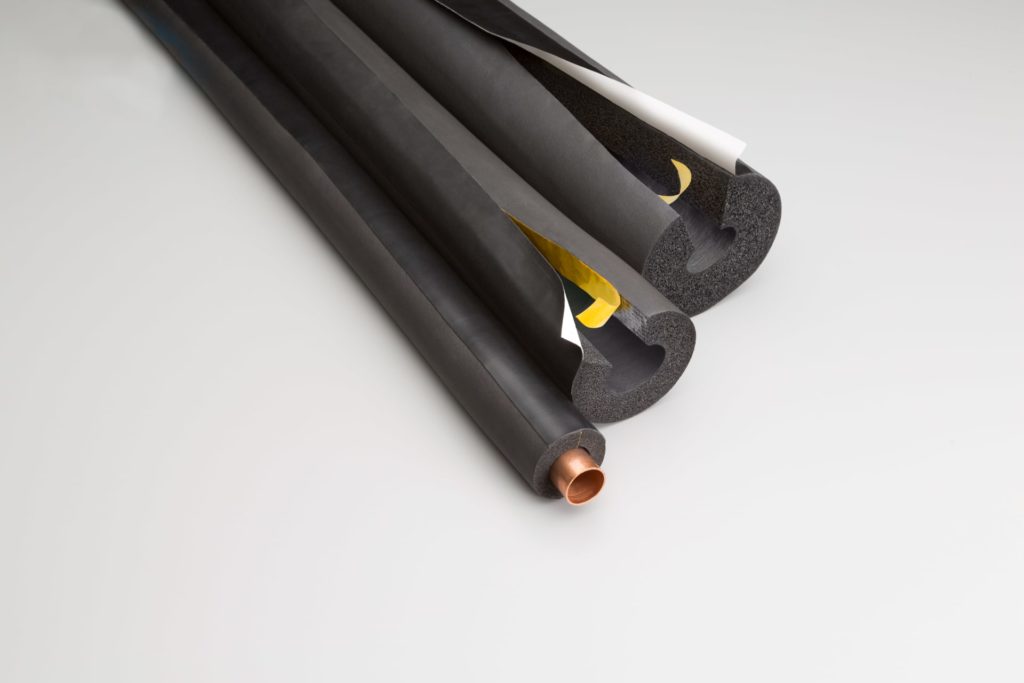
Thicknesses
While standard tubes are 6-feet (1.82 m) long, insulation wall thicknesses typically range from ¼” (6.35 mm) to 2” (50 mm).
Inside Diameters (ID’s)
Inside diameters of elastomeric foam pipe insulation are sized to fit over the “outside diameter” (OD) of the most common pipe sizes – copper tubing and iron pipe size (IPS). For example, a pipe insulation ID of ⅞” is intended to fit over ⅞” OD copper tubing. However, IPS sizes are a little different. A ⅞” ID pipe insulation will fit over ½” IPS.
Variables such as the manufacturer and tube type (unslit or self seal) determine the ID range available.
Elastomeric Foam Pipe Insulation Size Chart
In an effort to help make pipe insulation sizing easier to understand, you can click here to view Aeroflex USA’s Aeroflex® self seal elastomeric foam pipe insulation size chart.
Wrapping it Up
Closed-cell elastomeric insulation offers a wide range of benefits, particularly in terms of condensation control and mold prevention.
In most instances, choosing closed-cell elastomeric insulation will provide a favorable life cycle cost for building owners by delivering thermal efficiency, condensation control, low-VOC emissions, mold management, acoustic attenuation, and thermal comfort to help facilitate a safe and productive work environment for building occupants.
Want To Learn More? Click here to contact us today.

